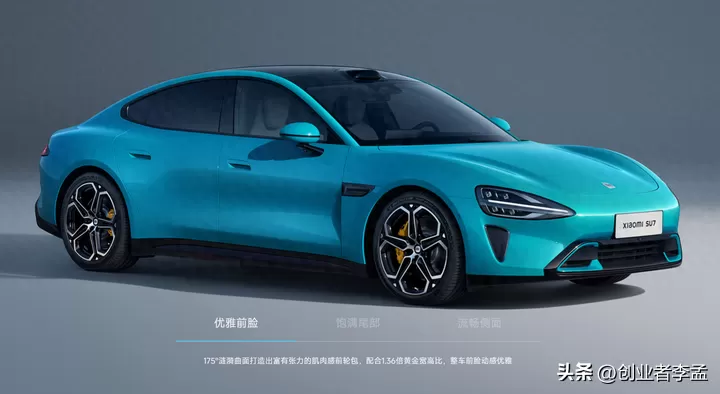NIO, a brand filled with legendary stories, emerged during a time when new car manufacturers were springing up like mushrooms after a rain. While many were still joking about "PPT car-making," NIO had already begun delivering vehicles to customers, distancing itself from the "PPT car-making" label. However, the good times didn't last long. In just a few short months after deliveries began, several self-proclaimed owners on the internet started exposing various issues with the NIO ES8. such as short driving range and central control system crashes.
Amid this storm of controversy, NIO invited a group of professional media to visit their factory in Hefei and tour their production line. At the same time, NIO’s CEO, Li Bin, also made an appearance. It seemed like an opportunity to hear from him directly about NIO's strategies to address the current issues with the ES8.

It’s Clear NIO Is Not Just Making Empty Promises
Led by the factory director and other factory personnel, the media had a quick tour of the factory—a common procedure when media visit automobile factories. It is often challenging to discern the strengths and weaknesses of a factory in such circumstances. During this visit, we toured all workshops except the painting workshop. The body shop, in particular, was noteworthy. The NIO ES8 uses an all-aluminum body, with aluminum accounting for 96.4% of the body material.
An aluminum alloy body has the advantages of being lighter in weight and stronger at the same thickness compared to ordinary steel. For the ES8. which constantly carries a large battery, this might be the best body material choice. However, aluminum alloy is also more challenging to weld than ordinary steel. To tightly weld the various body components together, the ES8 employs a total of seven types of aluminum joining methods and several innovative structures. As a result, the ES8’s body achieves a torsional stiffness of 44.140 N·m/deg.
I have visited many automobile factories, like Toyota and Geely, where the robots are highly utilized. At NIO’s factory, the all-aluminum production line was built by JAC and NIO according to the latest technological systems and production line standards. Suppliers include Sweden's ABB, France's ARO, Germany's DEPRAG, and Stanley Black & Decker. The 307 robots achieve 100% automation in the main body connections, with an overall workshop automation rate of 97.5%.

Is It Manufactured by JAC or NIO?
After visiting NIO's Hefei factory, this question is easily answered. Both the factory itself and all its production equipment are brand new. So, what role does JAC play in this? According to factory personnel, during the initial construction phase, the workers in NIO’s factory were carefully selected from JAC’s system, then underwent targeted training before transferring to positions at NIO’s factory. In other words, JAC provided experienced workers, some funding, and production licenses to NIO. The design, production line integration, and entire set of production standards all come from NIO's R&D team.
In the workshops, it was noticeable that NIO’s workers are very young. The person in charge mentioned that the average age of the workers at NIO’s factory is only 26 years.
No More Empty Promises—Just Delivering on Them
Many internet-based car companies have a common flaw: they make big promises without delivering. During this face-to-face interaction with Li Bin and other NIO executives, we could see NIO’s pragmatic attitude. Many media representatives present raised issues that users or the public have encountered with the ES8. and the responses were substantial rather than empty talk.
For example, in response to individual owners’ requests for features like "driving the ES8 around China" or "going anywhere a fuel vehicle can go," Li Bin stated that they have done their utmost to support these needs. He emphasized that these demands were not initiated by NIO, but rather, they have been making efforts to assist the owners and fulfill the services previously promised to them. Regarding user feedback on vehicle issues, Li Bin mentioned that they would engage in active communication to quickly find solutions.

Previously, NIO had released a four-minute fully automatic battery swap technology, which many doubted could be implemented in reality. In response, NIO demonstrated the physical swap station and the entire battery-swapping process at the factory. Interested individuals can view the full video on the official Weibo account of New Car Reviews (the entire process was completed within four minutes—the first live recording of NIO's battery swap).
Li Bin also mentioned that the cost of deploying a swap station is not high; it only requires three parking spaces and the necessary cables to make the station operational. Given NIO's current financial situation, they will use big data to calculate the most frequented intersections by users to deploy these swap stations. Next, Li Bin hopes to set up a swap station every 200 km on the highways. He assured that NIO's finances are sufficient to realize this plan.

Conclusion:
After spending a full day visiting the factory, I gained a deeper understanding of the NIO brand. Everything we could see today showcased NIO’s strength in hardware, including body rigidity and safety, suspension design, interior and exterior assembly quality, and motor performance data. However, aspects like the integration of the vehicle’s three electrical systems, the completeness of the in-car software, and the level of chassis tuning—these "software" elements—were not covered.
Unfortunately, the various issues reported online about the ES8 are mostly related to the "software." Li Bin emphasized multiple times that these can be resolved through OTA (Over-the-Air) software updates. Whether the issues with the ES8 are as significant as they appear online is something we will be able to answer after the ES8 test vehicle arrives at our editorial office, where we will conduct an in-depth experience and testing.





